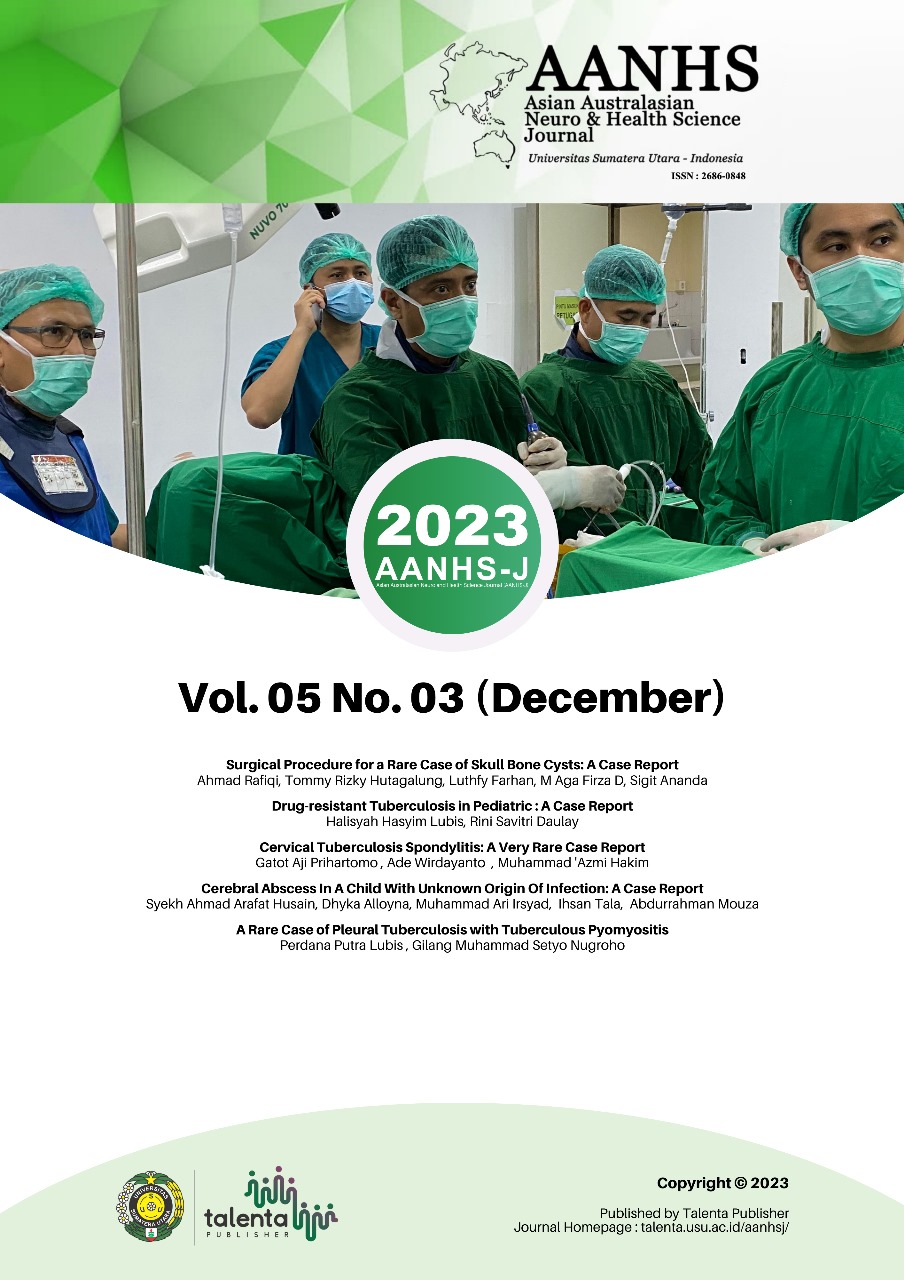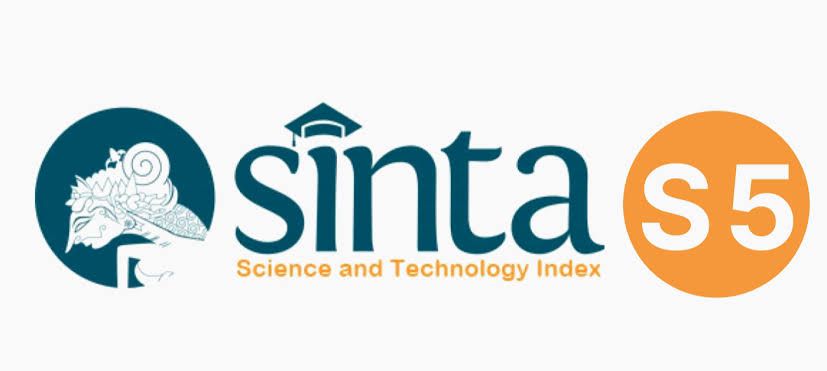Cerebral Abscess In A Child With Unknown Origin Of Infection
A Case Report
DOI:
https://doi.org/10.32734/aanhsj.v5i03.13907Keywords:
Brain abscess, children, broadspectrum antibiotic, parietal lobeAbstract
Introduction: The incidence of brain abscesses is higher in developing countries. The classic triad of fever, headache, and focal neurological signs was seen in 9–28% of the pediatric cases. Brain abscesses occur infrequently with potentially life-threatening conditions.
Case Report: The patient was a child 1 year 8 months old with a main complaint of weakness in the left arm and leg progressively for one month. She had a local seizure on her left arm and leg one month before admission with a duration of 30 minutes. She was irritable for the last two weeks. The strength of the upper and lower extremities was 3 respectively. The physiology reflex was hyper-reflex on the upper and lower extremities. A Head non-contrast CT scan showed a hypodense lesion on the right parietal with a perifocal edema lesion. A head contrast CT scan showed a hypodense lesion on the right parietal with ring enhancement measuring approximately 6,2 cm x 4,5 cm. Craniotomy evacuation abscess with near total capsulectomy was done on initial and capsule resection was done.
Discussion: Brain abscess is a focal pyogenic infection of the brain parenchyma, and the frontotemporal lobe is the most common site of brain abscess, followed by frontal-parietal, parietal, occipital lobes, and cerebellar. The most common risk factors that predispose a child to the formation of a brain abscess include congenital heart disease, sinus and otogenic infections, and poor dental hygiene. The triad of brain abscess, including headache, fever, and neurological symptoms is only present in (15%) of the cases reported. Medical treatment is recommended in patients without increased intracranial pressure, with symptoms of less than 1 week long and abscess of less than 2 cm seen in tomography. The suggested time of treatment is between 6 and 8 weeks with intravenously administered antibiotics. A full recovery rate from the infection of about 60–70% is reported in the case of early diagnosis and proper therapy
Conclusion: Cerebral abscess in pediatrics with unknown origin of infection may happen in 12%. Early diagnosis and treatment of pediatric cerebral abscesses can reduce morbidity and mortality rates. A broadspectrum antibiotic is an optimal treatment in the postoperative evacuation of cerebral abscess cases with unknown origin infection.
Downloads

Downloads
Published
How to Cite
Issue
Section
License
Copyright (c) 2023 Asian Australasian Neuro and Health Science Journal (AANHS-J)

This work is licensed under a Creative Commons Attribution-ShareAlike 4.0 International License.
The Authors submitting a manuscript do understand that if the manuscript was accepted for publication, the copyright of the article shall be assigned to AANHS Journal.
The copyright encompasses exclusive rights to reproduce and deliver the article in all forms and media. The reproduction of any part of this journal, its storage in databases and its transmission by any form or media will be allowed only with a written permission from Asian Australasian Neuro and Health Science Journal (AANHSJ).
The Copyright Transfer Form can be downloaded here.
The Copyright form should be signed originally and sent to the Editorial Office in the form of original mail or scanned document.













